Improve Your Indoor Air Quality
Mold Testing & Inspection in Clearwater, FL
At The Mold Girl of Clearwater, we’re passionate about protecting your family from the dangers of mold, asbestos, lead, and poor air quality. Our ACAC- & IICRC-certified environmental consultants test your home or business for hidden hazards and deliver a clear, comprehensive report—so you can make informed decisions about your health and safety. We’re here to help you breathe easy!
- ✅ Super Friendly Inspectors
- ✅ ACAC & IICRC Certified
- ✅ No Conflicts of Interest
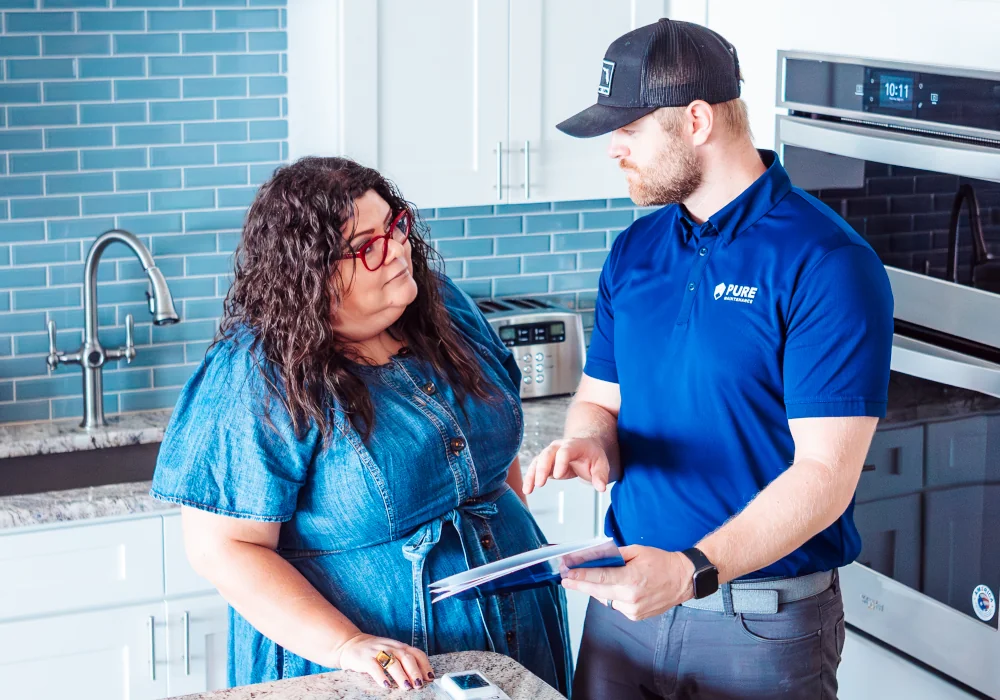

Signs You May Need Professional Mold Testing
Florida’s heat and humidity create the perfect breeding ground for hidden mold. Keep an eye out for these red flags in your Clearwater home or business:
- Persistent Musty Odor: A damp, earthy smell that lingers even after cleaning.
- Visible Spots or Stains: Green, black, or white patches on walls, ceilings, or HVAC vents.
- Allergy-Like Symptoms: Sneezing, coughing, or watery eyes that improve when you leave the building.
- Bubbling or Peeling Paint: Moisture trapped behind surfaces often signals mold growth beneath.
- Recent Water Damage: Leaks, floods, or plumbing issues within the last 12 months.
Not sure if it’s mold? Our certified inspectors can confirm within 24 hours and give you a clear plan forward.
📞 Call Now – (866) 673-6884PLEASE SEE A LIST OF OUR CURRENT
Air Quality & Environmental Testing Services
The Mold Girl of Clearwater offers a full suite of indoor-environment services—from mold testing to asbestos surveys—helping homeowners and businesses throughout Clearwater, FL breathe easier.
Emergency Mold & Water Response in Clearwater, FL
Mold and water damage can escalate within hours. Our Clearwater rapid-response team is on call 24/7 to contain hazards, protect your property, and start remediation immediately—giving you peace of mind when every second counts.
24/7 Emergency Dispatch
Our Clearwater crews are ready around the clock—arriving fast to assess damage and begin containment.
On-Site Air-Quality Assessments
Immediate sampling for airborne spores, VOCs, and moisture to verify safety before cleanup begins.
Rapid Leak & Moisture Detection
Thermal imaging pin-points hidden leaks, preventing structural rot and mold spread.
Containment & Negative Air
We set up HEPA-filtered negative-pressure zones to stop cross-contamination during remediation.
Water Extraction & Drying
High-capacity pumps and desiccant dehumidifiers remove standing water and dry structures swiftly.
Insurance Coordination Support
We document damages, assist with adjusters, and streamline your claim for faster approvals.
Mold Testing & Remediation Process
Our proven process ensures your Clearwater home or business is thoroughly inspected, accurately tested, safely remediated, and verified clear of mold. Each step is handled by ACAC- & IICRC-certified professionals for complete peace of mind.
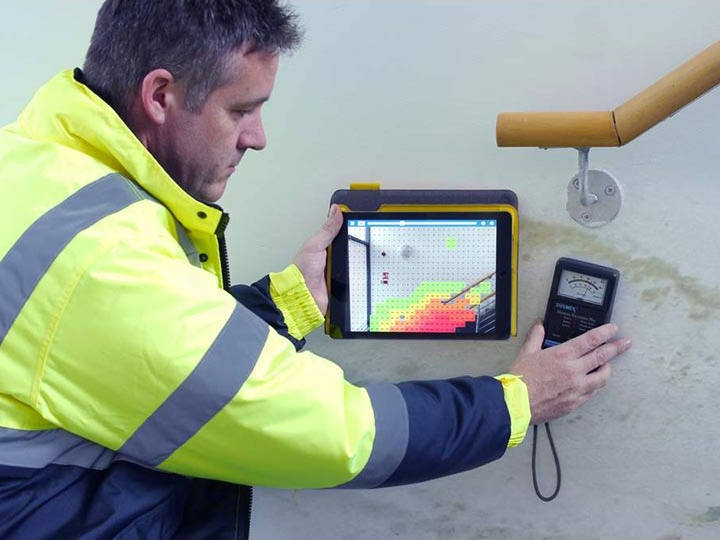
1. Visual Inspection & Moisture Mapping
We perform a detailed walkthrough, use infrared cameras to locate hidden moisture, and outline areas requiring sampling.
2. Air & Surface Sampling
Our technicians collect air-o-cell and tape-lift samples for lab analysis, determining spore counts and species present.
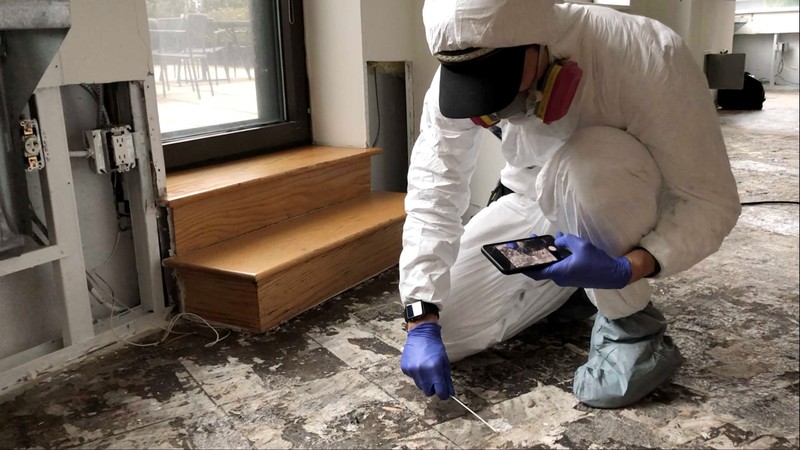

3. Containment & Negative Air
We install plastic barriers and HEPA-filtered negative-pressure machines to prevent cross-contamination during removal.
4. Safe Mold Removal & HEPA Vacuuming
Contaminated materials are carefully removed; remaining surfaces are HEPA-vacuumed and wiped with antimicrobial agents.

.jpg/:/cr=t:0%25,l:0%25,w:100%25,h:100%25/rs=w:1280)
5. Post-Remediation Verification
Clearance testing confirms spore levels are safe; repairs to drywall, flooring, and paint restore your space to pre-mold condition.
Mold Odor & Air Purification
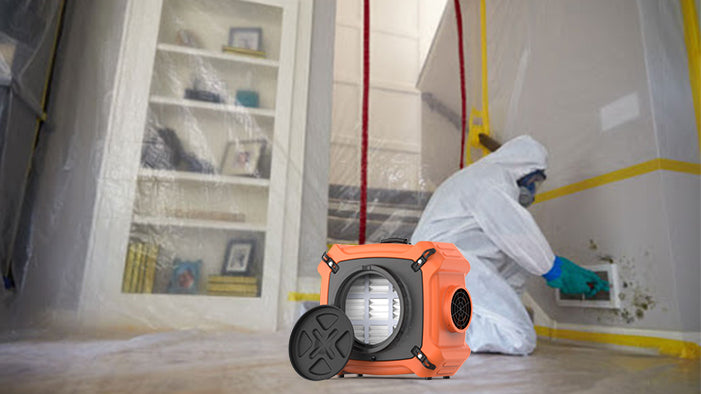
Advanced Air Cleaning
- HEPA Air Scrubbers: Capture 99.97% of airborne spores and particulates.
- Activated Carbon Filtration: Removes moldy odors and VOCs.
- Hydroxyl/Ozone Treatments: Neutralize persistent smells without harsh chemicals.
Preventive Measures & Education
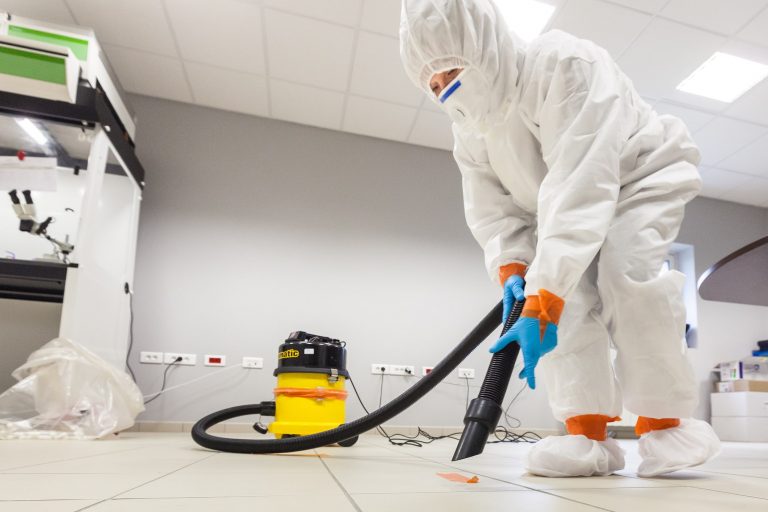
Long-Term Protection
- Moisture Control Plans: Recommendations on ventilation, dehumidifiers, and drainage.
- HVAC & Crawl Space Solutions: Sanitization, sealing, and insulation upgrades.
- Client Education: Tips on spotting early warning signs and maintaining healthy indoor air.
Prevent Mold Before It Starts & Trust Our Certified Experts
Stop Moisture & Mold Hazards in Their Tracks
At The Mold Girl of Clearwater, we do more than remediation. Our proactive inspections and indoor-air safeguards help you eliminate hidden moisture problems and keep mold from taking hold.
- Infrared thermal scans to reveal plumbing leaks behind walls
- Relative-humidity monitoring & dehumidifier recommendations
- HVAC coil & duct inspections to stop biological growth
- Vapor barriers and crawl-space sealing for long-term protection
Certified Clearwater Environmental Specialists
Our ACAC & IICRC-certified technicians follow the latest industry protocols. From moisture-source detection to local code compliance, we deliver expertise and peace of mind on every visit.
Expect professional uniforms, visible ID badges, and detailed service reports—so you always know who’s on-site and exactly what work is being done.
Ready to Safeguard Your Indoor Air?
Schedule a proactive mold-risk inspection or request emergency moisture control—available 24/7 across Clearwater and the Tampa Bay area.
📞 Call Now for 24/7 Mold Prevention & Response – (866) 673-6884Our Mold & Air-Quality Service Area
From Clearwater Beach to inland Polk County, our certified team is on call 24/7 with fast, reliable testing, inspection, and remediation—wherever you are on Florida’s West Coast.
Mold & Air-Quality Clients Who Trust
The Mold Girl of Clearwater

“Their inspectors found what other companies missed. Clear explanations, fast lab results, and no scare tactics—just solid science.”
– Maria K., Clearwater
“We had stubborn musty odors in our condo. Sampling pinpointed the source and remediation worked perfectly. Breathing easier already!”
– Jamal R., Tampa
“Professional from the first call. No-pressure inspection, honest report, and detailed moisture-control tips that saved us future headaches.”
– Lori M., St. Petersburg
“The team arrived same day after our leak. Containment, cleanup, and post-tests all documented. Insurance adjuster was impressed.”
– Chris D., SarasotaWhy Choose The Mold Girl of Clearwater?
Rapid Mold Testing & Cleanup in Clearwater, FL
24/7 Emergency Inspections, Air-Quality Testing & Remediation
🧪 Certified Mold Testing & Lab Analysis
🛑 Containment & Negative-Air Setup
💧 Moisture Mapping & Leak Detection
🌬️ HEPA Air Scrubbing & Filtration
🧹 Safe Mold Removal & Disinfection
🪟 Crawl-Space & Attic Remediation
🏷️ Insurance-Ready Digital Reports
🏠 Residential & Commercial Projects
⚡ Emergency Response – Pinellas & Hillsborough
🌡️ VOC & Allergen Air-Quality Testing
🛋️ Contents Cleaning & Odor Removal
🛠️ Drywall, Flooring & Paint Restoration
🔧 HVAC Coil & Duct Sanitization
🪟 Dehumidifier & Ventilation Solutions
🛡️ Post-Remediation Verification Testing
📉 Moisture Control & Prevention Plans
✅ Licensed, Bonded & Insured Technicians
🚚 Same-Day Service in Clearwater Bay Area
Whether you’re in Clearwater Beach, Largo, Tarpon Springs, or anywhere along the Gulf Coast, our certified environmental team is ready to respond. From precise mold testing to complete remediation and air-quality solutions, we restore your property—and peace of mind—fast.
Visit Us or Call for Mold & Air-Quality Services in Clearwater, FL
Mold & Air-Quality FAQs – Clearwater, FL
⏱️ How soon can you schedule a mold inspection?
We offer same-day or next-day appointments in Clearwater and surrounding Gulf Coast areas—often within just a few hours of your call.
🧪 What types of tests do you perform?
Our ACAC-certified inspectors collect air-o-cell, tape-lift, swab, and bulk samples. We also provide VOC and allergen testing to give you a complete indoor-air picture.
📄 Will I receive a written report and lab results?
Yes. You’ll get a detailed digital report with accredited lab data, moisture readings, photos, and clear remediation recommendations—all within 24 hours.
🚫 How do you prevent mold from spreading during cleanup?
We set up plastic containment, use negative-air machines with HEPA filtration, and follow IICRC S520 protocols to keep spores from cross-contaminating clean areas.
🐾 Are your products safe for families and pets?
Absolutely. We use EPA-registered, low-toxicity antimicrobials and can accommodate sensitive individuals, including infants, pets, and allergy sufferers.
🌴 Do you service towns outside Clearwater?
Yes. Our coverage includes Tampa, St. Petersburg, Largo, Sarasota, Bradenton, Tarpon Springs, and most of the West-Central Florida coast.














